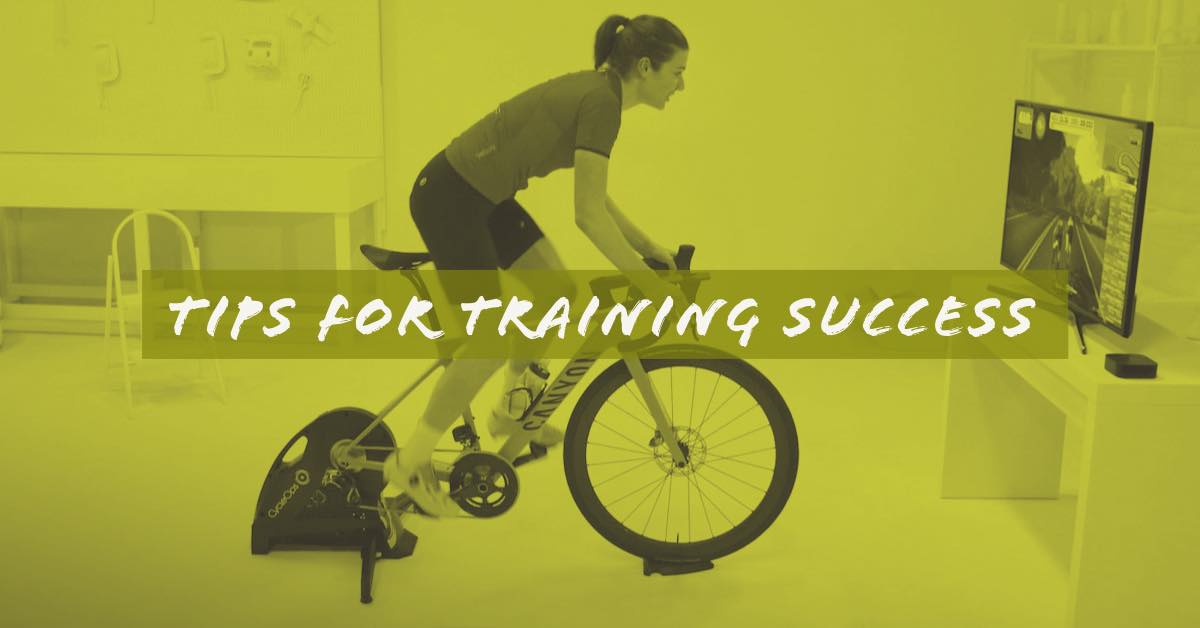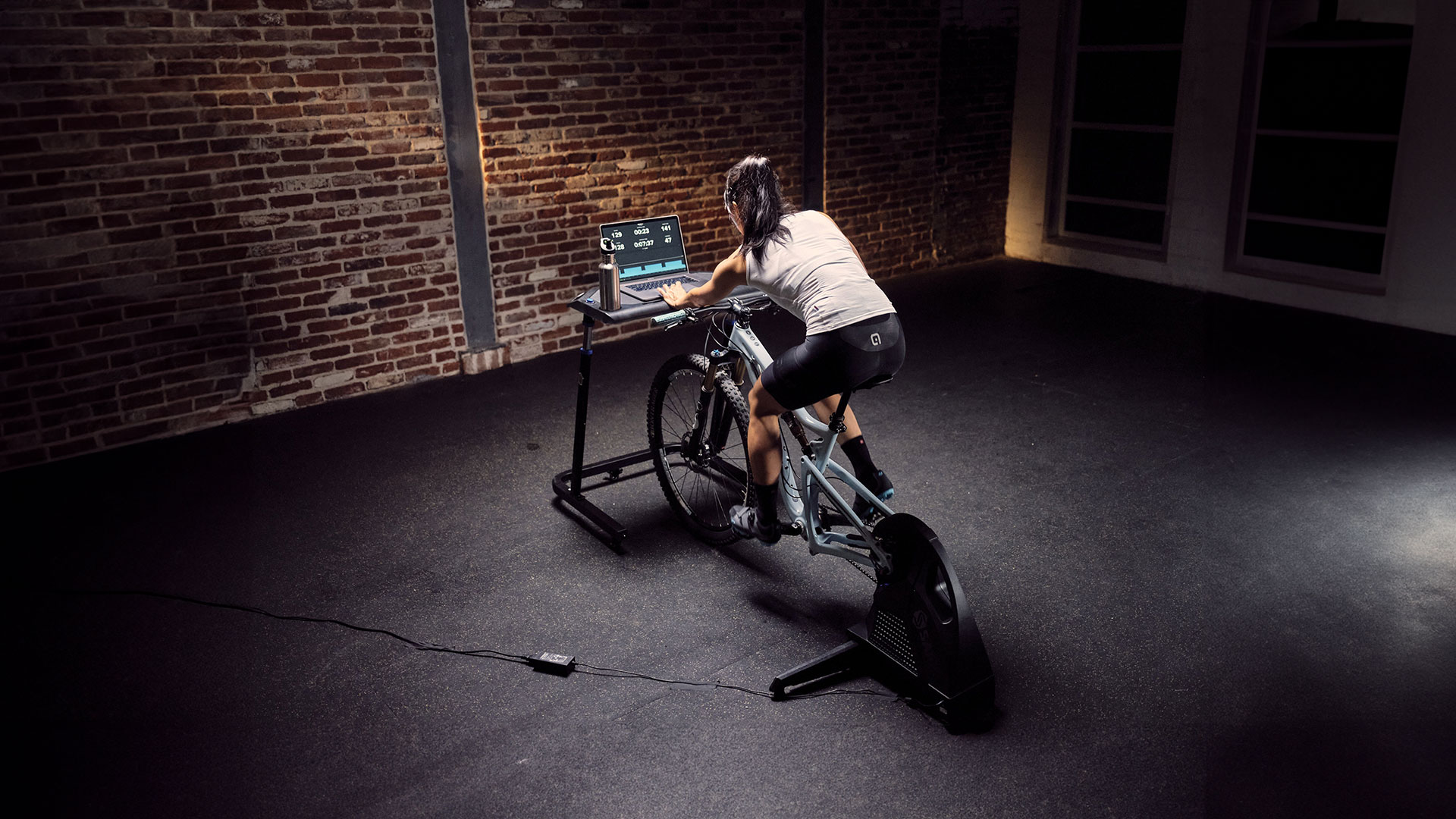Tips For Training Success

Back at the grind eh?
Quarantine has given many of us some prolonged training time this season. Maybe you jumped on wagon and maybe it’s starting to feel hard? Might be time to think a bit about what you can adjust to become more efficient and maintain your interest.
Disclaimer:
Should you even be training hard right now? Take a moment and read this advice from my friend and coach Tony Williams about staying healthy and training smart on the bike. Hard training weakens your immune system and body overall. Moderation is important right now. Base build is the key to maintaining fitness while staying strong. Don’t overdo it. If you haven’t been training much up until recently, don’t over extend your physiology now.

Intro:
This is my opinion of what I think can help people to succeed with structured training based on my experiences and watching some of my friends. My approach seems to have helped me to succeed where others have not necessarily seen gains. By adjusting my workouts and calendar I have successfully complete a variety trainer road plans over the last 10 years and I have seen some good fitness and performance gains. I think understanding how to adapt your training is key to completing plans and success.
Everyone here is probably already training and past the initial beginner stage, but this is my blog post for getting started which might still be useful for some tips:
Going back to tips for success, here is what I can offer.
Quick Summary:
To be successful doing structured workouts and training you want to strive for the following:
- Hit target power and cadence. (adjust FTP slightly until it feels hard but right)
- Complete the workouts. (adjust intensity and duration)
- Stick to your plan. (Move days around or choose variations if needed)
1.00. Help yourself be successful.
Starting out with indoor training can be tough. Especially if you go all-in with an ERG trainer and you start using structured workouts. EVEN IF you are a seasoned rider outdoors, structured training is a big deal. The process of intentionally straining your muscles, breaking them down, and allowing them to recover and rebuild stronger is hard. Probably harder than you thought. So you really want to start moderately and work your way to high training stress.
1.01. Start with an FTP Test
If you are using structured training, you MUST complete an FTP test to get a baseline target for the workouts to scale to your needs. You can't simply use your buddy's FTP as as starting point. And forget about what other people post regarding their FTP test. The value is a personal metric for you to use, not a comparison of your ability as rider. Even if we all used the same equipment and testing procedures, the values might be measured comparably, but how each of uses our strengths as a rider differs, so it's not worth trying to best your friends’ FTP for the sake of bragging. (Save that for the opening spring rides as you crush them). 10-20 watts too high in FTP is enough to KILL you on any threshold workout. When you are ready to start a program, begin with an FTP test.
1.02. Start with the correct program.
Most online training software and any plans you get from a coach are going to have phases. Typically Base Build-Strength Build-Specialty. There are proven scientific reasons each plans progression is structured as it is. You may find that Base Build, typically the first phase, is not as hard as you think you should be working. The purpose of Base Building is to build your heart and it’s ability to pump oxygen more fully. NOT to stress your leg muscles. If you are planning on a full winter of training, base build will be 6-8 weeks. THEN you start the hard stuff to break and rebuild your muscles. Even a shorter plan will start out gradually. Specialty plans typically focus on developing specific aspects of riding such as high cadence for XC races, or long duration high output for time-trailing. (And many others). For most riders jumping right into specialty plans is not as effective as if you started with a base build, then a power build and then worked on a speciality. Even if those are condensed programs, 4 weeks each. Unless you have your own coach providing you with customized plans based on test and performance data, you probably want to stick to a progression that prepares you for hard work over time. This typically involves 8 weeks or more. The timeline in my opinion is 12 weeks minimum, with 24 weeks being the timeline for my personal goals this winter.
When deciding on plans, be realistic about how much time you have, taking into account how much time you really have during the week, work, family commitments, holidays and vacations. Don't try to commit to a high volume plan (5 or 7 days a week) if you know you are heading away on vacation for a month. Block off your trip time as a rest and recovery, and work backwards from blackout dates and plan accordingly. if you have 10 weeks available, do an 8-week plan so you have some to adjust and move workouts around as needed.
Be realistic about the FREQUENCY of your workouts. I use LOW VOLUME (3 days a week) training plans exclusively because I like to spend Saturdays and Sundays outdoors XC skiing and fat biking in the winter. If I don't go out on the weekend or I want to work out more, I may add extra rides to my program, but I really only want to workout 3 weeknights. I do 3 or 4 Trainer Road workouts per week, and I add 1 to 3 Zwift races or rides when I want higher training volume. Weekend activities often end up counting as recovery workout days for me since my intervals are pretty hard. If you plan a mid-volume program with 5 rides per week and you only complete 3-4 workouts a week, your 8-week plan becomes a +12-week plan which you may never end up completing. Also, you do not want to take a one or two week break in your plan for a vacation. This will throw off muscles adaptation Use a shorter condensed timeline that fits in your calendar. You WANT to complete the plan so you can re-test and move to the next progression plan based on results. Using a Low(er)-Volume plan gives you some flexibility in moving workouts around in your calendar. (more below)
1.03. Cadence is Key
Without getting too deep into discussion, it's important to understand that cadence is a key element to riding an ERG trainer as the resistance gets harder. You can do 2 things to generate power; push the pedals harder or spin the cranks faster. If you slow your cadence and push the pedals harder, your ERG trainer will increase resistance to make sure you are pushing at the target wattage. If you slow down your cadence, the trainer Increases resistance some more and you will probably slow down even more, potentially cycling you down to ZERO rpm. (This is called the Wahoo Spiral of Death)
The number one thing I tell new ERG riders is that you must keep a good cadence up during tough intervals. When I started TR my normal cadence was about 75rpm. That's OK, but when the interval resistance is 310 watts (110% of my ftp) it requires a LOT of pedal mashing to maintain 310 watts. By comparison, spinning faster at 90rpm increases my power using primarily heart and lung, not leg muscles. Power is power though; it’s just coming from different muscle utilization and technique. Unless you are intentionally doing slow cadence work, strive for a cadence over 85 rpm. (TR often has cadence recommendations in the instruction text so read the screen!).
For most people, if you shift up one easier gear in most conditions, you should be able to increase in your cadence (getting more power) when you shift, you NEED to spin faster to make sure you stay on top of your effort since the trainer will increase resistance when you change to the easier gear. If you frequently find yourself in the Spiral of Death, then adjust your FTP. (See below)
1.04. Don't quit. Adjust
1.04.1. Reducing Intensity
If you accidentally start out with an inflated FTP, you may find yourself failing to complete the hard workouts. Even if your FTP test is accurate, it may take some time before you acclimatize to the expected work load. If you become discouraged because you are quitting workouts you may decide to skip workouts you think will be too hard to compete, and quickly lose interest in doing any of this hard stiff. Don’t get discouraged about this. You can change the workout intensity using the override button in almost every software in order to tweak your target.
It is my belief that you MUST COMPLETE WORKOUTS in order to be successful. 50% of a workout is not complete, nor all that useful in the big picture of structure training plans. 100% of a workout completed at 90% of the target wattage is ANOTHER ONE DOWN and good training stress logged. The principle of interval training for me is to work hard, and COMPLETE the workouts. Trust your body and mind. If tweaking the target -10% makes the task seem doable, do it. If you end up crushing the first 4 of 5 intervals, you cam jack the power back to 100% for the last one.
With the idea of successfully completing workouts, training week, and 12-week plans, make adjustments towards success.
So if you're struggling with how hard the workout intervals are (workout intensity) and you can't maintain good cadence, or can't push the pedals on a threshold workout (90% FTP) then REDUCE the target wattage using override buttons DOWN -5% to -10% so you can finish the hard intervals successfully. If you feel like you are bonking and your heart is going to explode, and won't be able to complete the total time, pause, let your heart rate come down a bit, and REDUCE the workout intensity down so you can finish. Quitting a workout after only 2 Intervals nets you almost nothing in structured training. You MUST finish the workouts, and it’s better to do this at -10% than quit. So tweak the workout intensity if that helps you get to full time.
If this happens on consecutive workouts where you have to quit, then your FTP is probably TOO HIGH. Heavy riders like me have relatively high FTP due to muscle mass, but 125% of 300 watts (3752!) for 12 minutes is crazy hard and simply not realistic unless the rider has a solid foundation. CHANGE YOUR FTP by lowering it -5 to -10 watts, or adjust the workout intensity, and try it again and see how it feels. 90% FTP intervals should feel HARD! You have to WORK to keep the cranks moving with good cadence. But you SHOULD be able to complete them most of the time.
Remember that the value of FTP is important for the software to scale workouts to your required stress level, but it does not report on maximum FTP, Time to Failure, VO2 max, heart rate decoupling or lactate thresholds and is not a complete measure of ability, fitness or heath. Even when you retest you may not see an increase in FTP, even though you FEEL like you are improving. You may actually see a decrease for any number of reasons. The gross improvements you do get may be other elements of your fitness and riding ability, such as higher sustained cadence, improved Oxygen delivery to your muscles, more efficiency with lower heart rate or better recovery. Don't obsess over FTP. Do the tests when you need to and tweak the value if you have to. A compete picture of rider health and ability is not measured by FTP.
1.04.2. Reducing Workout Duration
My personal goal is always to complete every workout, and complete my weekly scheduled workouts, ultimately completing everything based on my workout schedule and calendar. But, sometimes I don't feel like 90 minutes on the trainer after getting home from work, so I switch the workout to a 1-hour version because I want to do my workout on that day and 1 hour feels doable. If you are reducing the duration, you can also override the workout target +5% to +10% to top-up the training stress (TSSH). Occasionally, if I think the workout looks like it will kill me because I am tired, I will change from a 5 interval workout to a 3 interval workout of equal intensity but shorter duration. Sometimes I will add another ride to make up the TSS. My goal is to complete my day, my week, my months, close to the target plan. Listen to your body here. If you feel tired, you are tired. Swapping to a shorter or slightly easier workout can keep you on track.
One really great thing about Trainer Road is that many workouts have variations. Some variations are shorter duration workout of the same interval (like 5,4, & 3 x 90% FTP) Others are similar in the intended structure with lower FTP targets. These are labelled with the same name and a qualifying value such as CLARK -1, CLARK -2 etc... You can access them from the workout start page or find them in the master list and swap them into your calendar.
Think about the best way to stay motivated and stay on track. If you are tired after a full day of work and your workout looks psycho, choose a VARIATION, -1, -2, -3 that is shorter, possibly even with adjusted intensity. Use a time shortened workout variation rather than skip a day. Drop the target FTP a few watts and work through it, within reason.
1.04.3. Adjusting your week
Skipping workouts all together and re-scheduling them affects the total calendar time of your program. If you are training for an event, you don’t have much flexibility. If your just trying to be ready for the next MTB season, it’s probably OK to push the dates out a bit. What you really DON’T want to do is skip workouts entirely, especially if you don’t have much experience doing this. Workouts are organized to work (or rest) different muscle groups (heart & lungs, slow twitch, fast twist, hybrid) at different times often in particular sequence so skipping workouts is not productive. (And can lead to injury). Compete the workouts as closely as you can to the order they are organized.
Total duration is also very important. I've seen a few friends over commit to Mid-Volume programs (5 days per week) and only make it 4 weeks through the entire plan due to the extended time frame. That’s not going to do much to make you stronger. If you play outside on weekends or have other commitments that make it hard to stick to your planned workout days, I suggest using LOW VOLUE plans, shifting dates around as needed, and adding additional workouts if you have the time.
And if (when) you become fatigued and you think about skipping workouts because you feel really tired, space them out more in the calendar. You don't have to obsess about maintaining your schedule at the expense of life or being fatigued. A few days off will not kill your training. Just be aware that your total calendar days in your plan are stretching out.
Just so it’s clear, increasing the intensity of workouts does not mean you can skip workouts, do 1/2 of a plan, make up lost weeks in a short period of time, or reduce the days off between workouts. The best thing you can do is start low, learn, and adjust.
Trust the process for best results.

To summarize again:
To be successful doing structured workouts and training you want to strive for the following:
- Hit target power and cadence. (adjust FTP slightly until it feels hard but right(
- Complete the workouts. (adjust intensity and duration)
- Stick to your plan. (Move days around or choose variations if needed)
Don’t quit. Don’t get discouraged. Learn from each workout. Adjust and be successful.
You already started this so you're ahead of the pack.
Now go beast.

